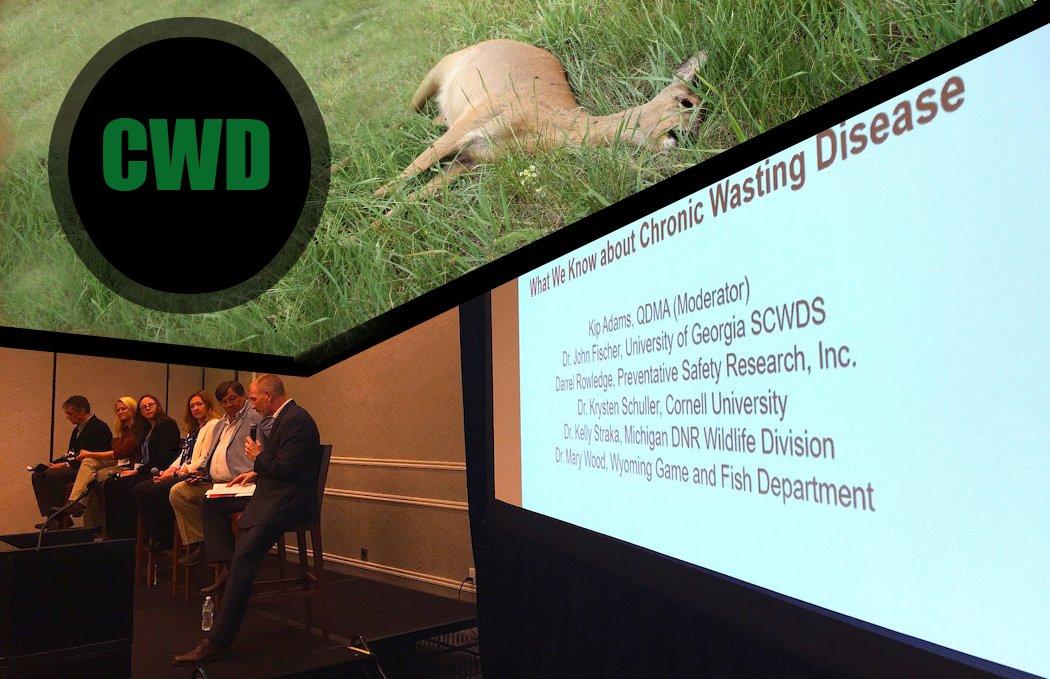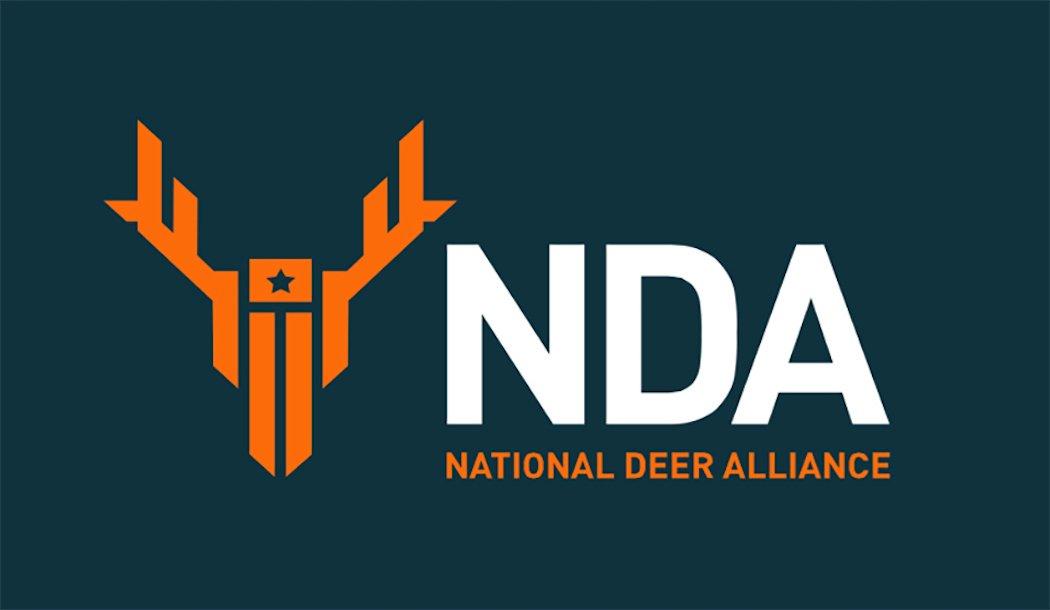The Chronic Wasting Disease Situation Is a Serious Threat
Chronic Wasting Disease (CWD) continues to worry deer biologists, managers and hunters across the country. It isn't going away. It's only getting worse.
Many people aren't aware of CWD, or simply don't understand the full breadth of the threat it poses. CWD is caused by an abnormal protein referred to as a prion. Prions are neither alive nor dead. You can't kill it with heat or chemicals.
Once contracted, it is an always-fatal disease that thrives in the nervous system of cervids (deer, elk, reindeer and moose). It can be passed on through saliva, urine, feces, spinal and brain fluids, etc. Similar diseases affect other animals such as Bovine Spongiform Encephalopathy (BSE) which is also referred to as Mad Cow Disease. It's also found in sheep, known as Scrapie. Interestingly enough, we already know that Creutzfeldt-Jakob Disease (CJD) — a sister disease to BSE and CWD — is capable of infecting humans.
The Issues We Face
Several challenges arise with the big issue of CWD. First, we're met with the challenge of detecting it. We don't fully understand how it mutates (and science has proven that it can mutate). We have no cure. It's killing deer throughout half the country and rapidly spreading. Managing it has been near to impossible. Too many people are brushing it under the rug. And funding we currently have for research, testing and management are pennies in comparison to what's needed to defeat this disease.
There are lots of hypotheses but very few facts we know about CWD, said Dr. Grant Woods of Growing Deer TV. There are some seemingly wild stories being spread such as 'CWD is not a disease.' It is a disease that as far as researchers know is 100 percent fatal to members of the deer family. There certainly seems to be a link between transporting deer and the spread of CWD. There are cases that have documented CWD-positive deer being moved and then new cases of CWD being detected at the destination. My message is that CWD is a very legitimate concern and that researchers, agencies, and sportsmen need valid information. Detailed research is needed hence funding is needed to protect deer species. They are certainly a national treasure.
It's Spreading to Places It's Never Been
Ralph Meeker of the Arkansas Game and Fish Commission is on the front lines of the CWD battle. And Arkansas — a once declared CWD-free state little more than a year ago — is a prime example of just how fast things can change. According to Meeker, CWD was first detected there last February in a hunter-harvested elk. He said it was detected in a whitetail two weeks later. It's already up to a 23 percent prevalence rate in the focal area. Approximately 20 percent of females and 32 percent of males have the disease where it's prevailing most.
I think Arkansas's approach to managing CWD has been viewed by some people and organizations as being aggressive, said Meeker. However, our agency has spent a great deal of time with several different researchers, managers, and veterinarians from around the nation who are very familiar with CWD. And, I think that our agency has done a great job to ensure that we are asking the right questions in order to figure out what has and what hasn't worked. Managing CWD is an example of adaptive management, adjusting deer management efforts on the ground to our every-changing knowledge of CWD.
False Information Spread by the Captive Cervid Industry
According to Lou Cornicelli of the Minnesota DNR and Clayton Wolf of the Texas Parks and Wildlife Department, many of those who have stock in the captive cervid industry will tell you high-fenced animals pose no threat to wild deer. They'll say that CWD isn't a serious disease and that it isn't a significant threat to whitetails. Instead, they'll claim it's a political disease dreamed up to end high-fenced hunting. Some are even brave enough to say that EHD (a disease that is not always-fatal and entire populations of deer have grown resistant to) is more of a threat. So let's put ethics and perceptions (of both hunters and non-hunters) of the high-fenced industry aside for a moment and only look at the health risks they pose to wild deer.
Misinformation campaigns [spread] belief that CWD won't impact hunting, said Cornicelli. First, the attempt by the farmed cervid industry to cast significant doubt about CWD, including bringing in paid consultants to cast that doubt. Second, some hunters are repeating much of the same information, I think to the detriment of long-term deer health. In some respects, there is a lack of desire to look past the immediate. Given deer are a public resource and agencies are charged with managing populations for the benefit of future generations, I think this is a real problem. A good discussion of how wildlife fits into the concept of Public Trust is important.
It's becoming a problem in states that allows captive breeding and hunting operations. This issue is especially growing in the likes of Texas and other key deer hunting states.
While the disease appears to be off the radars of most hunters in Texas, except in areas where we have mandatory check stations, the majority of those who have been impacted have been cooperative and receptive to information that helps them make educated decisions regarding CWD, said Wolf. One of our greatest challenges, and an area we continue to struggle, is trying to debunk and correct the misinformation that's out there about CWD. The majority of resistance and misinformation has originated from within the captive deer breeding community and its supporters. These folks are convinced the disease is political in nature, blown out of proportion by the government and those who are opposed to captive deer, and that CWD poses no real risk to the resource. Also, because 95 percent of Texas land falls under private ownership, we face an additional challenge from ranchers who fear the detection of CWD on their ranch could result in negative impacts to property values and revenue streams associated with hunting access.
Is It True Humans Can't Get It?
It's always been assumed that CWD cannot be transferred to humans. They also thought the same thing about Mad Cow Disease, until it happened, as well as hundreds of other diseases that can infect the human body. Interestingly enough, 70 percent of all human diseases originated from animals. At some point in history, each of those diseases — including some of the largest epidemics and pandemics — jumped the barrier and began to infect the human species. Can and/or will CWD do the same? We don't yet know. But the latest research suggests it is much more likely than originally thought.
According to Director Darrel Rowledge of the Alliance for Public Wildlife, the captive cervid industry is only making things worse.
We're making the problem worse in every way that matters by moving domesticated deer around, said Rowledge. This is a new disease that wasn't indigenous to wildlife. Most infections diseases (70 percent) come from animals. Even though it's hard to jump that barrier, we're [helping] it by domesticating animals.
Data continues to suggest humans could be capable of carrying CWD.
[Two weeks ago], confirmation of the transfer of CWD into macaques (a species of monkey) was presented at the Prion 2017 conference in Scotland by Stefanie Czub, Canadian Food Inspection Agency (CFIA), and the University of Calgary, said Rowledge. The 'supposed' resistance of macaques was about the only prop remaining in the complacency wall [macaques' genetics are closer to ours than squirrel monkeys, which also can contract CWD], but this is just the tip of the iceberg. The implications to markets are enormous, and governments here may have finally begun to take notice.
Interestingly enough, according to Rowledge, hamsters aren't susceptible to CWD, even when the prion is injected directly into the brain. However, it can be given to a ferret, which can then give the mutated CWD disease to a hamster after a period of time.
Soil and plants also are grave concerns. Studies have proven that CWD prions can survive once they are deposited into the soil. Other studies have established the fact that plants can then uptake those prions through their roots and into the plants. Animals can then (and are) consume those plants and contract CWD.
And according to Rowledge, a recent study included the application of CWD prions to the exterior of plants (simulating the secretion and deposition of bodily fluids by infected animals) and then tried to scrub the plants to remove the prions. In many cases, those prions were not removed despite intense scrubbing. So, it's possible that prions are being directly consumed — both inside and outside of plants — by other animals. The scariest part in terms of human consumption? Some of those plants are entering our own vegetation-based food chain.
See just how serious this issue is? Bigger than you previously thought? Starting to discredit all of the sources telling you CWD is of no concern or threat to deer and deer hunters?
We have to look at what is and what was, Rowledge continued. Prions are the single greatest challenge left in biology. But what's happening on a large scale is we aren't asking the questions that need to be asked.
Funding Is Needed to Beat CWD
It's almost laughable how much funding those who are leading the battle against CWD have, versus the amount of funding they need to accomplish their goal of eradicating, or at the very least minimizing, this disease.
So, my immediate interests involve partnerships and cooperation in dealing with partnerships, cooperation, consent, funding issues related to deployment of a long term, comprehensive implementation program to control the spread and prevalence of CWD in Pennsylvania as well as to facilitate prevention of novel infections into the state via natural dispersal and human transportation of live cervids, high risk parts, etc., said Wayne Laroche of the Pennsylvania Game Commission. There is room and need for partnership and cooperation to obtain funding, necessary legal authority, hunter and landowner consent as well as for research.
Simply put, there isn't enough money to do what needs to be done. Additional resources are needed from the government(s), organizations, and everyone within this industry who cherishes the white-tailed deer. It has to come from somewhere.
I hate to be the doomsayer. That's never been my style. But this is serious. And if we all keep sitting on our thumbs while this disease spreads, there may not be a very bright future in store for the white-tailed deer. Or for deer hunters.
Despite those who foolishly brush it under the rug and claim it should be of no concern to you, it is a problem. Listen to the experts. Sift through the data. Think for yourself. But don't just sit back and take someone's word for it. And for those who recognize the threat for what it is, the last thing we should do is grow complacent. There's still a lot we don't know about this disease. But we know enough to realize it's past time to take action.
Are you a deer hunter thirsty for knowledge? Check out our stories, videos and hard-hitting how-to's on deer hunting.
And follow us on Facebook. It's the 21st century, dude. Get with the program.









